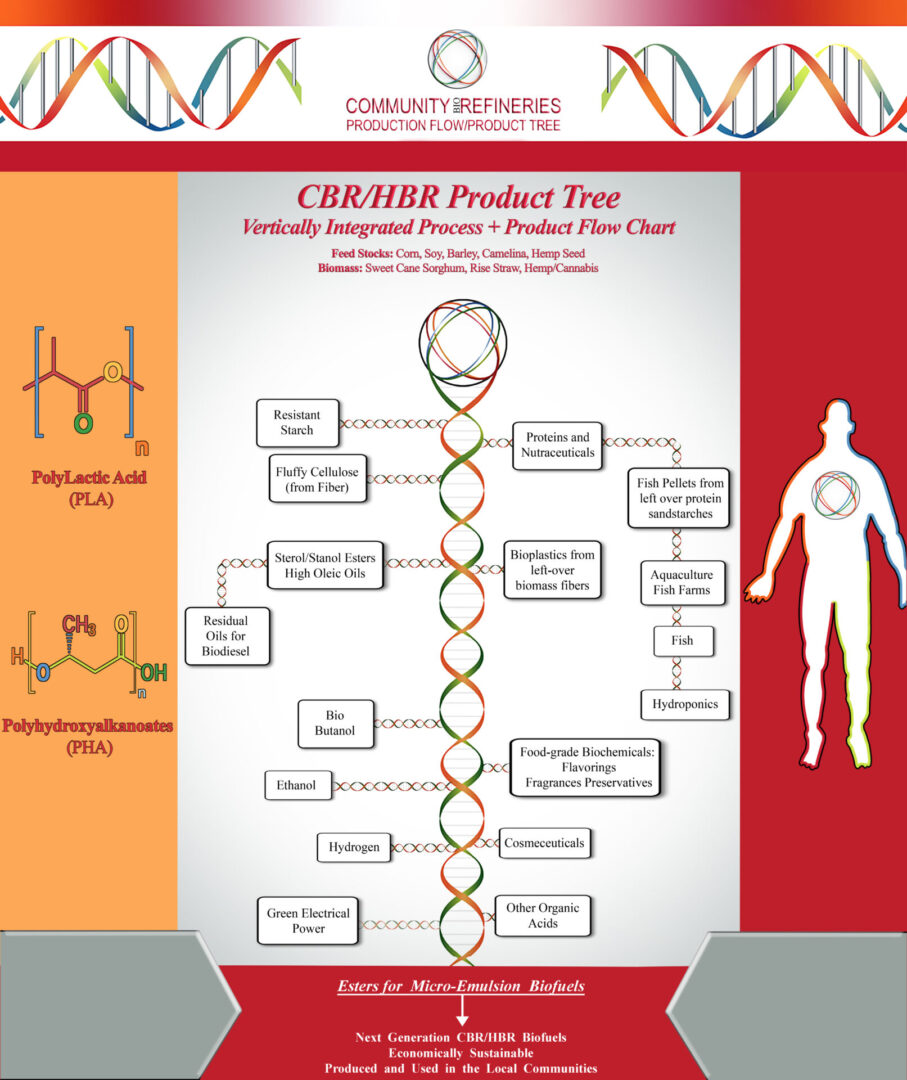Turning Food Values From Feedstocks Into Biofuels
"...So, what do Food Products have even remotely to do with Biofuels, Bioenergy, and the like, from a BioRefinery?
Simply put – Plenty!"
The CBR/HBR continuous flow bioreactor system enables us to approach fermentation science from some exciting directions.
In chemistry, an ester is a chemical compound derived from an acid (organic or inorganic) in which at least one –OH (hydroxyl) group is replaced by an –O–alkyl (alkoxy) group. Usually, esters are derived from substitution reaction of a carboxylic acid and an alcohol.
Esters are a functional group commonly encountered in organic chemistry. They are characterized by a carbon bound to three other atoms: a single bond to a carbon, a double bond to an oxygen, and a single bond to an oxygen. Ester names are derived from the parent alcohol and the parent acid.
These and other volatile esters with characteristic odors are used in synthetic flavors, perfumes, and cosmetics. Certain volatile esters are used as solvents for lacquers, paints, and varnishes; for this purpose, large quantities of ethyl acetate and butyl acetate are commercially produced.
Our late Founder, the first patent holder on biodiesel from organics, possessed significant perspectives in the cultivation and application of simple algae as a meaningful feedstock for food AND biofuel production. While CBR fully intends to continue to pursue his vision, our initial focus will be on more traditional feed stocks and biomass.
Having said that, our quest for suitable biomass for biofuel, even the concept of algae cultivation, appears in the spotlight for biofuel manufacturing due to several positive perspectives such as:
- They do not clash with human or animal food chains;
- Very rich with carbohydrate, protein, and oil content;
- Can grow in aqueous media such as wastewater, freshwater, saline water, and assimilate nutrients from brackish water, salt water, or highly polluted water,
- Demand low water;
- Sustain capability to grow whole year naturally with sunlight presence;
- Can be cultivated in the waste dump area, sea, ponds, rivers, industrial, and municipal waste drainage, wet bare lands especially in cold regions;
- Develop sustainable O2generation system; and,
- Diminish CO2by up taking it for photosynthesis respiration.
In addition, microalgae contain very short harvesting life cycle and yield nascent biomass that drives higher productivity of the desired biofuel.
Don't look behind that curtain; there's no one there…
The biofuels industry would have us all believe that they are a stand-alone monolithic entity. Just like a line from "THE WIZARD OF OZ":
The reality is that the Food industry and the Biofuels industry have everything to do with each other. The US biofuels industry relies primarily on diverting vast amounts of corn and soy from the food chain to literally burn it up just to produce biofuels (which when put into fuel tanks finishes the job). Diverting that much corn and soy from the food chain results in shortages, which further result in an increase in their prices. (There is that pesky supply-and-demand biz again…)
Today, the biofuels industry can no longer produce just one meaningful product and then hide behind the curtain. In 2020, the Mighty Wizard has been revealed! A true biorefinery must immerse itself in the realities of the new environmental demands, social awareness, and the latest technological breakthroughs; it must embrace vertical integration to produce bio-based, economically sound, and environmentally responsible products. What the biorefinery industry needs in the 21st Century is the Community Bio-Refinery, the ‘CBR’.

In the scientific engineering field, infographics are visual tools to show the vertical integration of products generated in your facility. A Product Tree Infographic is one of the most powerful tools you can use to explain your process to the readers. Our Product Tree (above) represents an organized sequence of information that enables us to communicate information about a specific product.
Our Product Tree utilizes a visual image-based a sequence of vertical steps. We created the CBR/HBR Product Tree by using the information about our vertically integrated process. The information contained within our Product Tree is a vertical map representing our CBR process.
Our Product Tree Infographic is similar to a picture book with the visual steps we utilize to process every molecule in our feedstock. We developed interactive infographics for the two styles of learning. The "left-brained" observer is often said to be more logical, analytical, and objective; a "right-brained" observer is said to be more intuitive, thoughtful, and subjective. We created the CBR/HBR Product Tree Infographic with each page interlinked to necessary information about each product produced by the CBR process. It's not only visually exciting, but it also makes it much easier to understand the information contained in each item.
Using the product tree or the red ‘accordion’ drop-down menu above, you can use both widgets for more in-depth information on any of our bio-based products. Each of the devices (Red Accordion drop-down boxes or the Infographic) has a comprehensive description of the products we produce.
The critical difference between the two is that a product graph represents data and information rather than the actual product itself. We created an interactive product tree that lists a variety of products generated within a Community Bio-Refinery.


